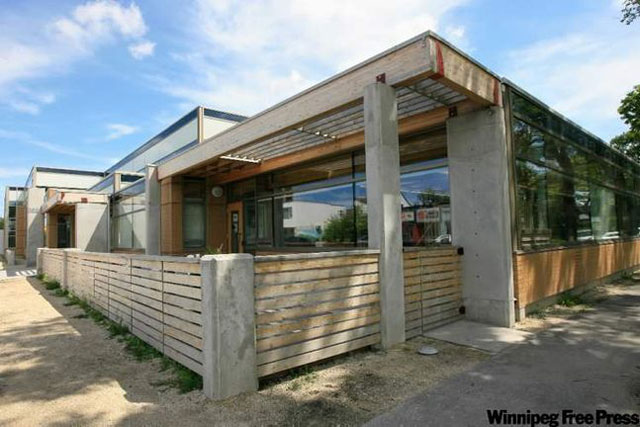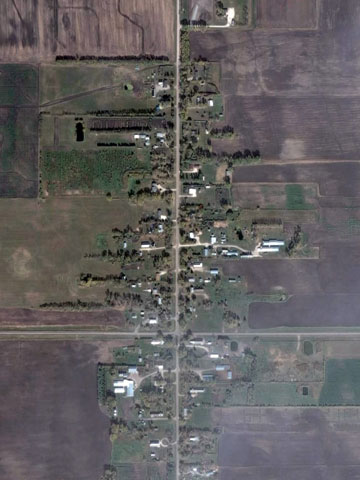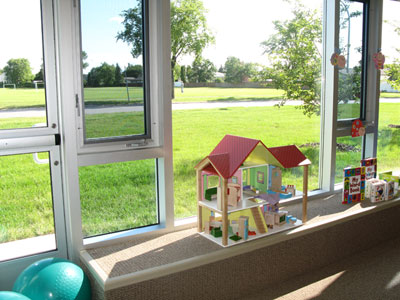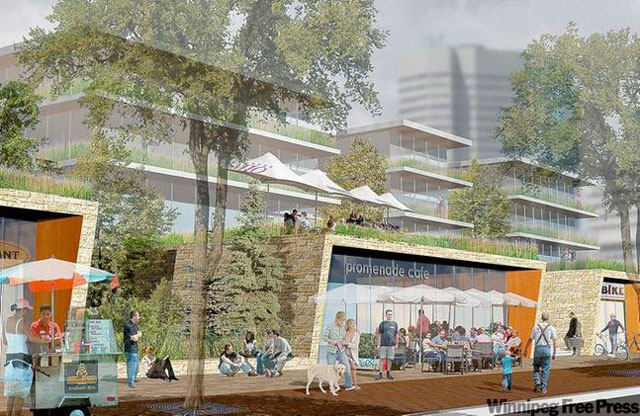Sports facilities help cities avoid 'doughnut' look - They make core a fit place to live
- Details

It's an ironic coincidence that during the last three decades, with the rise in popularity of Tim Hortons, not only are Canadians' collective midriffs beginning to resemble the shape of a doughnut, but so too are many of our cities.
Referred to as the "doughnut effect," places like Winnipeg have seen a migration of population and commerce to the edges of the city, creating an economic void in the centre. As sprawling suburbs and big-box retail centres leapfrog each other outward, the city becomes less dense, less sustainable and weakened at its core. Many once-proud inner-city neighbourhoods now struggle with issues of crime and poverty as a result.
Remains
- Details
 Coming from rural southern Manitoba, it’s easy to think that we don’t have any “architectural heritage” to look to for inspiration. However, our prairie landscape is rich with remnants that tell the story of our ancestor’s. In my case, it’s the story of people who embraced their community and who were very intentional about how they carried on the traditions of the place they came from.
Coming from rural southern Manitoba, it’s easy to think that we don’t have any “architectural heritage” to look to for inspiration. However, our prairie landscape is rich with remnants that tell the story of our ancestor’s. In my case, it’s the story of people who embraced their community and who were very intentional about how they carried on the traditions of the place they came from.
Exchange needs a delicate blend - Development must reflect its historic character
- Details
Many Winnipeggers share the childhood memory of eagerly tearing open the wax-paper wrapping, chewing that stale stick of gum while flipping through a new pack of hockey cards in search of their favourite players.
For most, the trading cards have been lost somewhere in time, but occasionally an old collection forgotten in the back of the closet is uncovered to reveal a valuable link to the past.
Like that collection of old hockey cards, hidden away for years, the buildings of Winnipeg's Exchange District have survived because they had largely been forgotten. Decades of slow growth has meant little pressure to redevelop the area, resulting in a substantially intact collection of historic buildings.
The Urban Condition
- Details
 Everyone cares about shelter, but not everyone cares about their environment, why? What value has been forgotten? As more and more Canadians move from the rural landscape into urban centres, the experience of the city becomes a vital reflection on the population that lives within it. What does it mean to navigate the streets of where we live? How does the experience of the urban environment affect the choices we make? We celebrate historic buildings but what of bus shacks, convenience stores or gas stations. These every day places are essential pieces of urban living. What elements of our lives affect us and inform the decisions we make in our work?
Everyone cares about shelter, but not everyone cares about their environment, why? What value has been forgotten? As more and more Canadians move from the rural landscape into urban centres, the experience of the city becomes a vital reflection on the population that lives within it. What does it mean to navigate the streets of where we live? How does the experience of the urban environment affect the choices we make? We celebrate historic buildings but what of bus shacks, convenience stores or gas stations. These every day places are essential pieces of urban living. What elements of our lives affect us and inform the decisions we make in our work?
Spanish city model for future Forks
- Details

Imagine a city in the not-too-distant future. A medium-sized city, isolated and far from the power centres of the country.
Clinging to the banks of a muddy old river, the evidence of early prosperity is seen in the rail yards, once its lifeblood. For a century, the trains screeched and smoke billowed from the central yard, but when the asphalt railway took over, the area fell silent.
Over the years, the riverside industrial land was reclaimed as a great public space for the city. The old buildings were transformed into markets, and a waterfront walkway and a dramatic new bridge were built. Park space, a hotel, a theatre and restaurants were all part of the plan.


